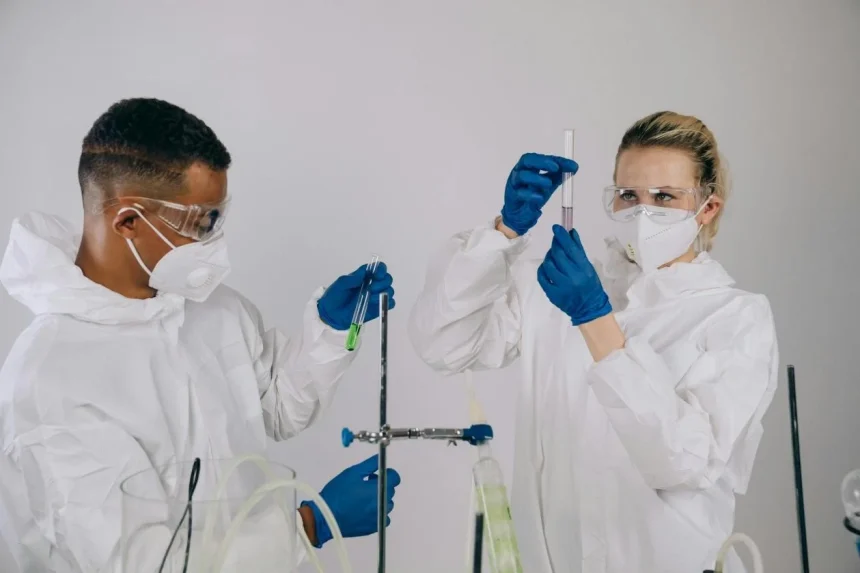Have you ever thought about what it takes to make a workplace safe when working with chemicals? Many people work with different chemicals every day. That’s why it’s important to have chemical safety training.
This blog post will explain why quality training is important to keep everyone safe from chemical dangers. By the end, you’ll learn how to protect yourself and your coworkers better at work.
Understanding Chemical Safety Training
Chemical safety training teaches employees on how to prevent chemical hazards in the workplace. It explains how to store and get rid of chemicals properly.
The training also shows how to read labels and safety data sheets. By learning about the risks, workers can prevent accidents.
Recognizing Chemical Hazards
The first step in staying safe around chemicals at work is to know what the dangers are. This means learning what a chemical is and how it might harm you.
Training teaches you to spot different hazards, like if it’s poisonous, can catch fire, or react badly. Knowing this helps you stay safe at work.
Conducting a Chemical Risk Assessment
Chemical risk assessment helps find out about possible dangers, checks how likely you are to be exposed, and suggests ways to stay safe. Learning about chemical safety in training can teach employees how to do these assessments. When everyone is well-trained, it can really cut down on accidents and problems.
Proper Chemical Handling Techniques
Chemical safety training teaches you how to handle chemicals safely. You’ll learn how to store them, use them right, and get rid of them safely. By following these simple rules, you can keep yourself and your workplace safe from harm.
Preventing Chemical Exposure
Preventing chemical exposure is an important part of safety training. Employees should learn how to avoid chemical dangers at work. This includes wearing safety gear, following safe practices, and keeping work areas clean. Doing these things helps keep everyone safe and healthy.
Responding to Chemical Spills
Even if you’re careful, spills can still happen. Training teaches employees how to respond quickly if there’s an accident.
Staff should know how to handle spills and have access to emergency kits. Responding correctly can reduce risks and keep workers safe.
Understanding Personal Protective Equipment (PPE)
Personal Protective Equipment (PPE) is crucial for keeping workers safe from dangerous chemicals. Different types of PPE, like gloves, goggles, respirators, and aprons are essential to ensure safety.
Using and taking care of PPE properly not only makes you safer but also helps you feel more confident knowing you have the right tools to protect yourself in risky situations.
Promoting a Safety Culture
When employees learn about safety, they become more careful and share what they know with others. This makes everyone safer. A good safety culture means talking openly about dangers and working together as a team to ensure employee chemical safety.
Prioritize Chemical Safety Training in the Workplace
Investing in chemical safety training is vital for ensuring a safe workplace. This training helps employees recognize chemical hazards, conduct risk assessments, practice safe handling, prevent exposure, and respond effectively to incidents.
Through these efforts, organizations can create a culture of safety that benefits everyone. Chemical safety training is not just about compliance; it’s about protecting lives.





